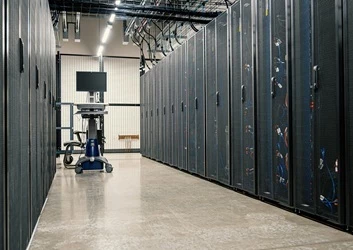American Airlines' Data and Analytics Revolution
The world’s largest airline has responded to pandemic disruption by turning to data and analytics.
Add bookmark
American Airlines boasts of having a plane in the sky every hour of every day and since its inception 96 years ago has managed to become the world’s biggest airline.
Yet, as I’m sure readers are aware, airlines have been struggling to cope in the aftermath of Covid-19 and more than 100,000 flights being canceled in the US alone between January and July in this year as the industry has wrestled with fewer air traffic controllers and an ongoing shortage of pilots.
Speaking to CIO, Poonam Mohan, vice president of corporate technology at American Airlines, told the magazine that the company’s shift to moving data onto the cloud was crucial to American Airlines digital transformation.
“We moved our major data platforms to the cloud and implemented data hubs for Customer and Operations,” Mohan says. “These systems allow real-time data from many of the massive moving parts of the world’s largest airline to be used not just for understanding how events affected us in the past, but rather allowing us to improve customer and operational outcomes as they happen”.
Mohan is referencing the businesses adoption of Microsoft’s Azure as its preferred cloud platform for its airline applications and key workloads earlier this year, significantly accelerating its digital transformation and making Microsoft one of the airline’s largest technology partners.
In a press release at the time, Judson Althoff, EVP and chief commercial officer stated that, “As the airline industry continues to transform, building a digital technology foundation in the cloud will be essential for future resilience. Through our partnership, American Airlines is taking a forward-thinking, cloud-first approach to using data, AI and our collaboration platforms to reimagine not only its own operations but the experiences of its employees and customers.”
What Althoff was referring to is that now, when an aircraft lands at American’s largest hub, Dallas Fort Worth International Airport (DFW) the two companies are applying the power of AI, machine learning and data analytics to reduce taxi time, saving thousands of gallons of jet fuel per year and giving connecting customers extra time to make their next flights.
Built on Azure, the airline’s intelligent gating program provides real-time analysis of data points, including routing and runway information, to automatically assign the nearest available gate to arriving aircraft. Previously, gating decisions for American’s 136 gates at DFW required more manual involvement from gate planners. Now, the program can look at multiple data points simultaneously for the hundreds of daily arrivals, saving more than a minute of taxi time per flight. That adds up to 10 hours of reduced taxi time per day, lower fuel usage and decreased CO2 emissions.
Furthermore, the airline is also currently migrating and centralizing its strategic operational workloads — including its data warehouse and several legacy applications — into one Operations Hub on Azure, which it says will help it save costs, increase efficiency and scalability, and progress toward its sustainability goals.
In terms of digital twins, the airline has launched two new Machine Learning (ML) programs, started this spring, include HEAT (short for Hub Efficiency Analytics Tool) and the aforementioned intelligent gating program. HEAT essentially aims to help the airline delay more and cancel fewer flights.
In a press release, Managing Director of the American Airlines Integrated Operations Center Steve Olso explained how: “It’s a very sophisticated technology that looks at crew data, customer connecting data, as well as airport resources and it synthesizes that into a plan where we can take our big arrival and departure banks at some of our large locations and delay them for a period of time to where weather is not impacting the airport.”
Launched at Dallas Fort Worth (aka “Doesn’t Function Wet”), HEAT works by analyzing multiple data points, including weather conditions, load factors, customer connections, gate availability, and air traffic control to help American Airlines adjust departure and arrival times on hundreds of flights in a coordinated and modelled way.
As Mohan told CIO, “So far, we’ve been pleased with the results as it has reduced the number of cancelations during a weather event,” Mohan says. “While customers may be delayed, we are able to get them to their destinations as opposed to canceling their flights.”
The transformation is truly holistic in nature, and is being applied across every facet of the business – even in the development of future innovations. As Maya Leibman, outgoing executive vice president and CIO of American Airlines says: “We’ve also been building a developer experience platform, called Developer Runway, to create a frictionless experience for our developers to build and deliver applications”.
The platform reportedly enables teams to build and expose their services. Teams across the technology organization work directly with the Runway platform and the developer community is then able to leverage what is exposed on the platform to simplify their delivery experience.
As Leibman departs, she leaves behind an innovation-driven culture in her wake. American Airlines now has an entire team dedicated to delivery transformation within the and maintain a culture centered on continuous learning as well as helping business partners to adopt DevOps and product-based practices. Internally, there is now an immersive coaching environment called “the Hangar,” to create space for product teams to work closely with coaches.
Replacing Leibman is incoming Executive Vice President and Chief Digital and Information Officer (CDIO) Ganesh Jayaram, who joins from from Deere & Company where he has led the information technology organization since 2016 and served as its Chief Information Officer. In his previous role, Jayaram led an Agile Operating Model Transformation at Deere & Company which invested heavily in employees and technology to deliver differentiated, measurable outcomes more rapidly for the company’s business functions and customers.
The successful results of that transformation are clear enough for all to see, and include a 165% increase in output as well as a ROI greater than 100%. With this in mind, it would seem the company's new data-savvy pilot is coming in for a smooth landing, and American Airline’s new data and analytics revolution is in a safe pair of hands.

































